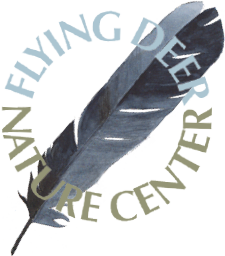Have you ever serenaded a worm? Neither had we until we joined a children’s worm rock band! After this week with the Woolly Bears, we will truly never look at a worm the same way.
Unlike European earthworms, which are also an introduced species (nearly all worms are non-native to North America!), these jumping worms are bigger, wrigglier, have an iridescent sheen but most notably, they often pop off part of their body when picked up!
The most alarming quality though, is how quickly these worms are changing the soil structure of forests, turning leaf litter into coffee grounds consistency, often stripping important nutrients and making life for native species, salamanders, and other creatures more difficult. Since there is still so much unknown about jumping worms, the Woolly Bears set off on a grand worm investigation this week to better understand these creatures, how they move and live, and how they’re impacting the land here.
When we arrived at our campsite on Tuesday, we were delighted to see the creativity of children as they fashioned sticks into drum sets. An even deeper type of learning was at play: Students had noticed that the jumping worms tend to emerge when there is lots of movement and sound, and they were curious if they could create vibrations that would lure the worms to the surface. With the help of a counselor, they had created grooved sticks to rub into the ground and were eagerly watching the results of their experiment. To our amazement, we saw jumping worms pop up and thrash on the forest floor as the students played. Students debated between themselves how the worms emerged if they didn’t have ears? How were they moving without legs? How could they see where they’re going without eyes?
With the help of a pool noodle, a bandana, and a Slinky, we broke down the parts of the worm in our morning circles—learning how worms move with their body segments, lay babies in cocoons with their clitellum, and chomp with their mouth parts. We played a game to put this information in play, where robins (students) chased the worms (noodles) and tried to pull off their clitellums (bandanas).

Later in the week we added an additional nature challenge: a predator bird! Now the robins had to escape the Cooper’s hawk hunting them as they hunted worms! We loved watching the childrenpractice these new words as they raced to gobble up the quick-moving worms!
Throughout the week, we used different tools to get a new perspective on our learning: magnifying glasses to look at the body segments, microscope to see the shiny skin, rulers to measure the different lengths of worms, counting to see how many segments their bodies had, journaling, and soil collection. We even conducted a mustard test that scientists use to study worm populations. And of course, through play and experience, with lots of digging, holding, hammock building and habitat creation for the worms!
On Wednesday, we went for a hike to see if the worms had wriggled their way to other parts of the land and took soil collections at camp, the buckthorn forest and at Grandmother Maple to check out how far they’ve spread. It was a sweet scene as friends held hands along the way, many comparing treasures gathered or noticed during the walk: multi-colored mushrooms, nuts, and other nature finds.

On Thursday, we became worms! Blindfolded and without a sense of sight, we held on to a rope and together moved our bodies to camp. It was exciting for so many students to find their edge here and try something new in this challenge.
The week zipped by as new friendships were sparked, exploration of our campsite deepened, and students came in tune with the rhythms of our day. Our counselors brought magic with their gifts of storytelling, new building projects, and an openness to dive into the child’s world of imaginative play!
Here’s a fascinating read about jumping worms and earthworms!
—JJ, Julie, Rebecca, and the counselors
October 1, 2021
